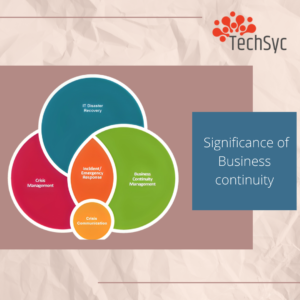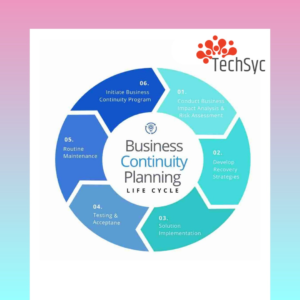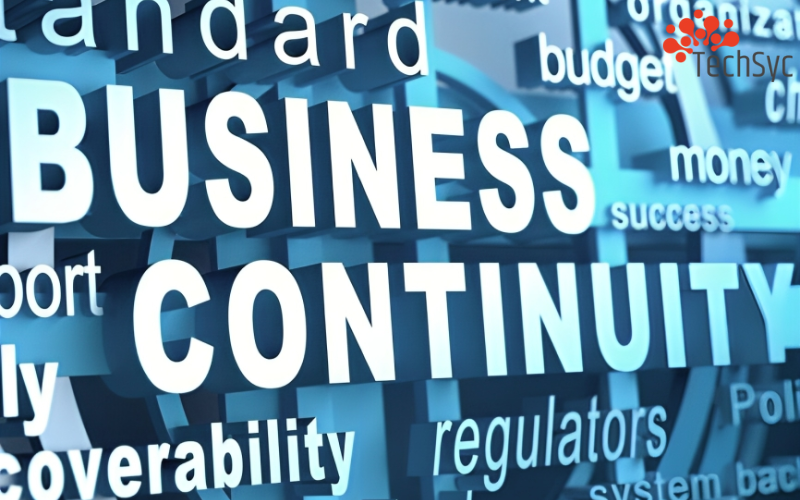” Navigating uncertainty : Strategies For Effective Business Continuity”
The current terrain of global uncertainty has caused numerous businesses to rethink their plans for the future. Business durability is essential for success in a constantly changing request. In this blog post, we will explore crucial strategies for navigating uncertainty and preparing for effective business durability.
1.Understanding the significance of Business continuity
In the moment’s unpredictable and uncertain business geography, understanding the significance of business durability is pivotal for the long- term success and survival of any association. Business durability refers to the capability of a company to continue its operations and deliver products or services, indeed in the face of unanticipated dislocations or heads.
It’s a visionary approach that ensures the sustainability and adaptability of a business, regardless of external circumstances. One of the primary reasons why business durability is so important is because it helps companies maintain a competitive edge in the request. In an ever- changing business terrain, associations that can snappily acclimatise and respond to unanticipated events are more likely to succeed.
By having a solid business durability plan in place, companies can minimise the impact of dislocations, similar as natural disasters, cybersecurity breaches, or profitable downturns, and snappily renew normal operations. Likewise, business durability is vital for erecting trust and maintaining client fidelity.
This builds trust and fosters long- term connections, as guests feel confident in their choice to do business with an association that has proven its capability to navigate misgivings. Another pivotal aspect of business durability is its impact on the character and brand image of a company. In moment’s digital age, news is predestination, and any negative event or dislocation can snappily damage a company’s character.
2.Identifying potential risks and threats to Your Business 
In the ever- evolving geography of business, it’s pivotal to identify and understand implicit pitfalls and pitfalls that can peril the durability of your operations. By proactively relating these pitfalls, you can take the necessary way to alleviate their impact and insure the adaptability of your business.
One key aspect of relating implicit pitfalls is conducting a comprehensive threat assessment. This involves assessing the internal and external factors that could disrupt your business.
Internal factors may include functional inefficiencies, technological vulnerabilities, or hand development. External factors, on the other hand, can range from natural disasters and cyber pitfalls to changes in government regulations or shifts in client preferences. To conduct a thorough threat assessment, you can start by assaying literal data to identify any recreating issues or vulnerabilities. This can give precious perceptivity into areas that need enhancement or fresh safeguards.
Also, conducting interviews or checks with crucial stakeholders, similar to workers, guests, and suppliers, can give a well- rounded perspective on implicit pitfalls. Once implicit pitfalls have been linked, it’s essential to prioritise them grounded on their liability of circumstance and their implicit impact on your business. This will help you allocate coffers effectively and develop targeted mitigation strategies.
3.Developing a Comprehensive Business Continuity Plan
Developing a comprehensive business durability plan is pivotal for icing the adaptability and sustainability of your association in the face of uncertainty. This plan serves as a roadmap that outlines the conduct and strategies necessary to minimise the impact of dislocations and keep your business running easily.
To begin developing your business durability plan, it’s important to establish across-functional platoon that includes representatives from colourful departments within your association.
This platoon will be responsible for conducting a thorough analysis of your business processes, relating critical functions, and determining the coffers demanded to maintain those functions during a dislocation. Next, you will need to conduct a business impact analysis( BIA) to assess the implicit consequences of dislocations on your business operations.
The BIA will help you identify the recovery time objects( RTOs) and recovery point objects( RPOs) for each critical function. These objects define the maximum permissible time-out and data loss forbearance, independently, and will guide the development of your recovery strategies.
Once you have a clear understanding of your critical functions and their recovery objects, you can start developing the recovery strategies. This may involve enforcing spare systems, establishing backup locales, or forming hookups with external merchandisers.
4.Communicating Your Plan to Stakeholders and workers
Effective communication is pivotal when it comes to enforcing a business durability plan. It’s essential to keep all stakeholders and workers informed and engaged throughout the process. By effectively communicating your plan, you can ensure that everyone understands their places and liabilities, leading to a further cohesive and successful response to dislocations. To communicate your plan effectively, consider the following strategies .
- Be transparent and Proactive: Keep stakeholders and workers informed about the implicit pitfalls and pitfalls that could impact the business. give regular updates on the progress of the business durability plan and any changes or advancements that have been made. This translucency builds trust and confidence in your association’s capability to navigate misgivings.
- Use multiple communication channels: Utilise a variety of communication channels to ensure that your dispatches reach all stakeholders and workers. This may include emails, intranets, company-wide meetings, and social media platforms. conform your messaging to the specific requirements and preferences of each followership.
- Foster a culture of open communication: Encourage stakeholders and workers to ask questions, share enterprises, and give feedback. produce a terrain where everyone feels comfortable speaking up and offering suggestions for enhancement. This two- way communication not only enhances understanding but also fosters a sense of collaboration and power in the business durability process.
- Conduct training and drills: Regularly train stakeholders and workers on the business durability plan and conduct drills to test their understanding and preparedness. This hands- on experience allows individuals to exercise their places in a controlled terrain and identify any gaps or areas for enhancement.
5.Testing and Updating Your Plan
Once you have developed a comprehensive business durability plan, the work does not stop there. Testing and updating your plan is essential to insure its effectiveness and rigidity to evolving pitfalls and pitfalls. This section will claw into the significance of testing your plan and give guidance on how to effectively modernise it.
By bluffing different scripts, you can estimate the response and effectiveness of your plan. Testing should involve all crucial stakeholders and workers who play a part in executing the plan. This hands- on experience helps them understand their liabilities and how to act in real- time. There are colourful testing styles you can employ, including tabletop exercises, functional exercises, and full- scale simulations.
Tabletop exercises involve script conversations and decision- making processes, allowing actors to test their knowledge and assess the effectiveness of their response. Functional exercises involve performing specific functions of the plan, similar as cranking backup systems or communicating with stakeholders. Full- scale simulations pretend a factual dislocation, involving multiple brigades and departments in real- time. Each system offers different situations of complexity and provides precious perceptivity into the strengths and sins of your plan.
After conducting tests, it’s pivotal to dissect the results and identify areas that need enhancement. Take note of any backups, communication breakdowns, or gaps in knowledge. This feedback should inform the updates and variations you make to your plan. ensure that you capture any assignments learned and stylish practices to enhance the overall adaptability and effectiveness of your plan.
Conclusion:
In the moment’s fleetly changing and uncertain business terrain, the significance of business durability can not be exaggerated. The capability to navigate uncertainty and effectively respond to dislocations is essential for the long- term success and sustainability of any association. Throughout this blog post, we’ve explored crucial strategies for creating a flexible business model and icing effective business durability.
Also Read: Top 200+ High PR Social Bookmarking Sites List
Also Read: Common Mistakes to Avoid When Implementing an Ecommerce SEO Strategy

